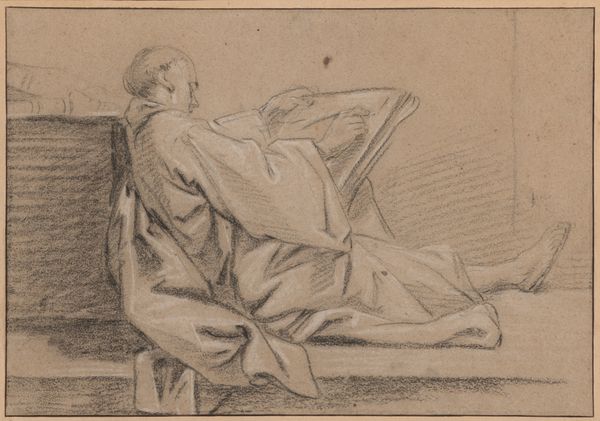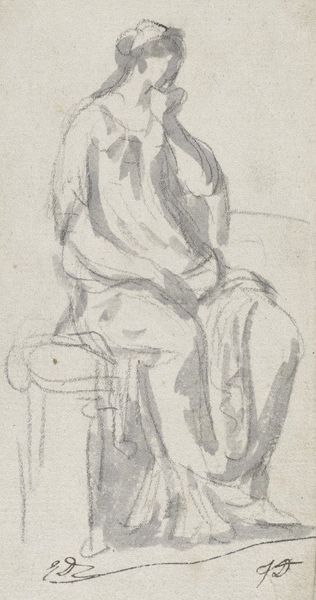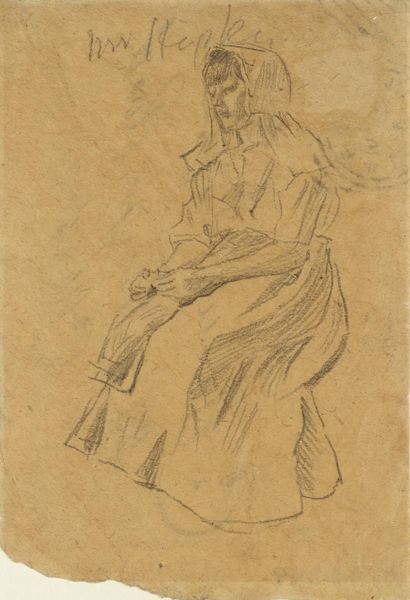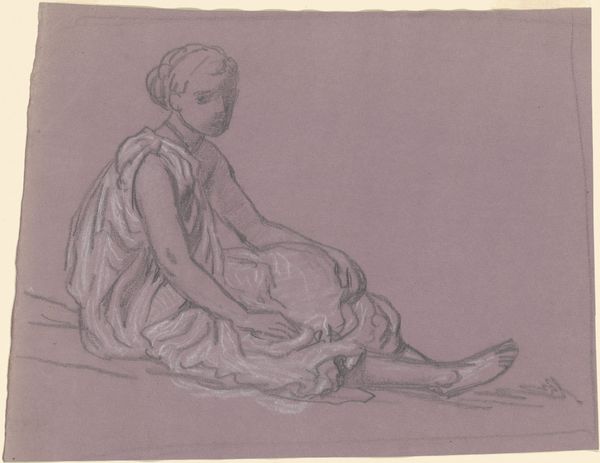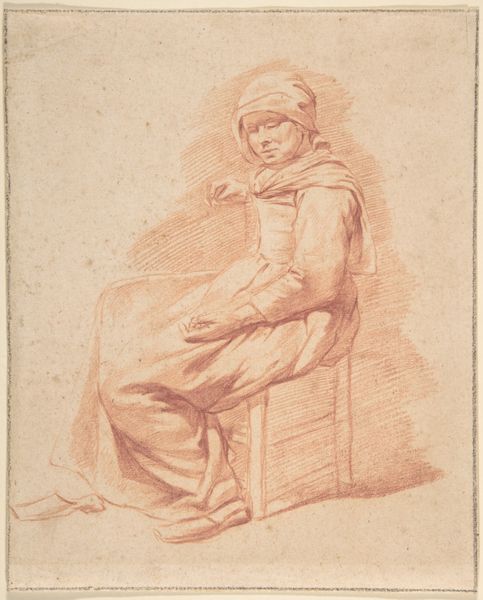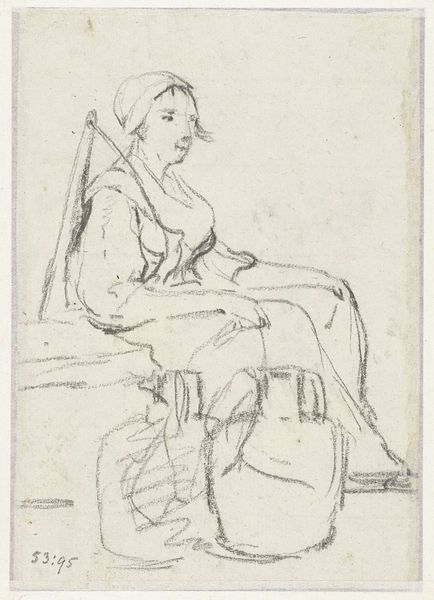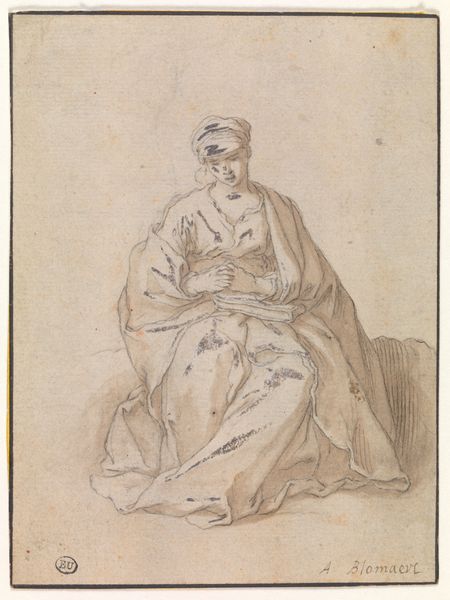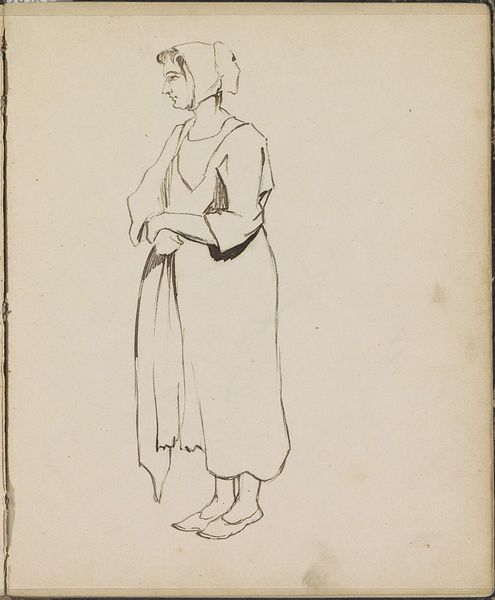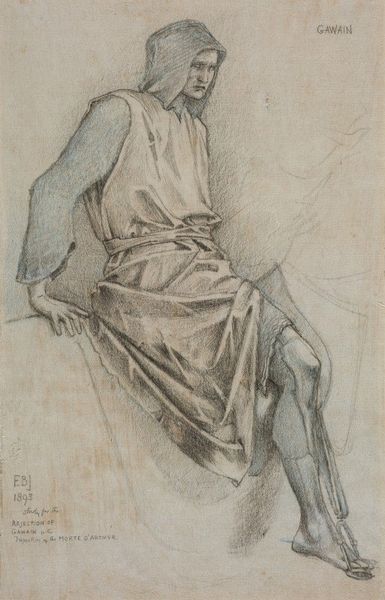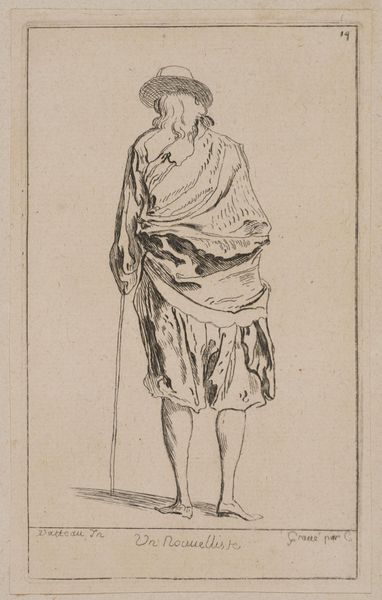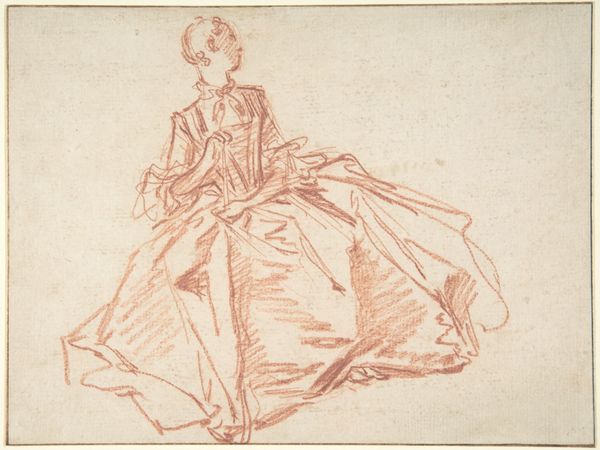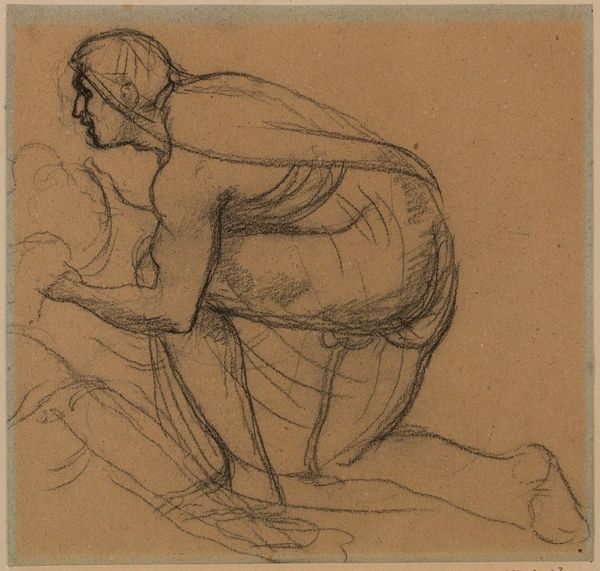
drawing, pencil
#
portrait
#
drawing
#
pencil sketch
#
pencil drawing
#
pencil
#
portrait drawing
#
academic-art
#
nude
#
realism
Copyright: Public Domain: Artvee
Curator: Before us, we have "Femme assise à terre," a pencil drawing executed in 1882 by Pierre Puvis de Chavannes. Editor: Immediately striking is the melancholic air. The earth-toned paper complements the soft shading of the figure, contributing to a palpable sense of introspection. Curator: Indeed. Note the academic style – the artist’s delicate control over the pencil renders subtle gradations of tone and intricate textures that define the seated woman’s posture. The lines carefully construct the nude's form and drapery, indicative of classical training. Editor: Viewing this now, I'm struck by how the work confronts idealized visions of femininity prevalent during its time. Rather than presenting an overtly sexualized or commodified figure, Puvis de Chavannes's figure appears world-weary, perhaps disenfranchised, her gaze cast upward as though yearning for respite. This prompts contemplation on the representation of women, their roles and internal struggles during the late 19th century. Curator: That's a compelling perspective. We also mustn’t disregard the aesthetic choices at work; the artist deliberately avoids stark contrasts. Notice that even the areas meant to convey shadow remain translucent, and the outlines are blurred which generates a gentle, allusive visual effect. It is also intriguing to reflect on the negative space surrounding the figure, and its impact on the work's overall reading. Editor: And such formal understatement lends further to the psychological charge of this rendering. What is it she hopes to see above? Is it progress in her time, freedom from restraint and objectification? Curator: Such inquiry brings additional dimensions to how we engage with it now. It goes to show, art remains a fluid, enduring exchange between what the artist expresses and the evolving cultural frameworks that continue to inform our understanding. Editor: Exactly, it pushes us to reckon with the past and question our present moment, while also granting glimpses into universal human feelings across time.
Comments
No comments
Be the first to comment and join the conversation on the ultimate creative platform.
